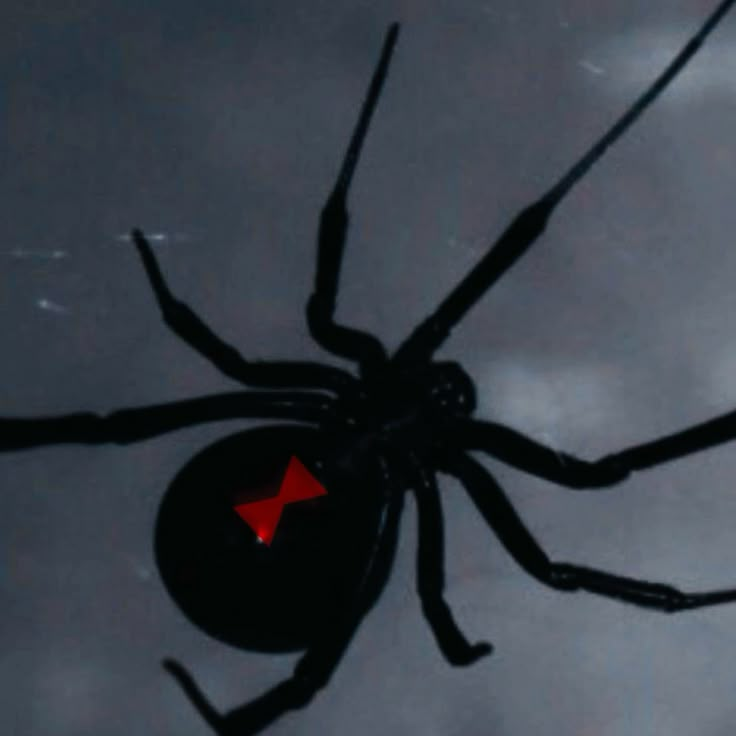There’s something chillingly captivating about the black widow spider. Maybe it’s the glossy jet-black body, the unmistakable red hourglass on its belly, or the mysterious reputation it carries. Whatever it is, the black widow isn’t just another spider you shoo away from a corner—it’s a creature of legends, science, and curiosity. So, let’s dive into the sticky, shimmering world of black widow webs, explore the myth vs. reality of their venom, and answer the ultimate question: Are black widows deadly?
Meet the Black Widow: Not Just One Spider, But Many
When people hear the name black widow, they often picture one specific, infamous spider. But here’s something most people don’t know—there’s more than one type. The northern black widow, western black widow, and southern black widow are all members of the widow spiders family, scientifically known as Latrodectus. Each has slight differences in range, markings, and behavior, but all are bound by the same eerie allure.
While the northern black widow sports a broken red hourglass and prefers the cooler eastern forests of North America, the western black widow is more common in arid, desert-like regions of the western U.S. So, if you’re wondering where do black widows live, the answer is: more places than you might expect. From woodpiles to basement corners, garages to outdoor sheds, their webs can appear just about anywhere.
The Iconic Look: What Sets Them Apart?
Let’s be honest—black widow spider pictures look like something straight out of a horror movie. With their shiny black bodies and vibrant red hourglass markings, they are instantly recognizable. But what most people miss is their size. So just how big are they?
The black widow spider size typically ranges from 1.5 to 2 inches (with legs extended). Surprisingly, the male black widow is much smaller and lighter in color, often brown or gray with faint red spots. Males are not only tiny—they’re also much less dangerous.
Here’s a fun fact: Male black widows hardly ever bite and aren’t known to be venomous to humans. It’s the females you’ve got to be cautious of.
A Web Like No Other
Ever walked through a messy, sticky, irregular-looking spider web? You might’ve just bumped into a black widow web. Unlike the neat circular webs made by garden spiders, a black widow’s creation looks tangled and chaotic—but it’s cleverly engineered for stealth and strength.
Black widow spiders are not hunters. They wait. Their webs act as traps, and once an insect is caught, the spider strikes with precision. The silk is so strong that it’s often used in materials research!
Danger in Disguise: Are Black Widows Really Deadly?
Here’s the million-dollar question—are black widows deadly? The short answer: not usually to humans. Yes, a bite from a female black widow can cause significant pain, muscle cramps, and nausea. In extreme cases—especially if a small child or elderly person is bit by a black widow spider—it can be dangerous. But fatal cases are extremely rare, especially with modern medical care.
To put things in perspective, you’re far more likely to have a bad reaction to a bee sting than a black widow bite. Still, if you ever suspect a bite, especially with muscle tightness or severe pain, get to a doctor immediately.
Bite Stories: What Happens When You’re Bitten?
Let me tell you about Jason, a hiker from Arizona who unknowingly disturbed a western black widow under a rock. Within minutes, he felt a sharp prick, followed by pain that spread to his back and legs. “It felt like my muscles were twisting in on themselves,” he said.
Jason made it to the ER in time and was treated with pain management and muscle relaxants. He recovered fully, but now he checks every rock before sitting. His story reminds us that black widow venom isn’t a joke—but it’s not a death sentence either.
Widow Spiders Habitat: Home Is Where the Web Is
Widow spiders’ habitat varies depending on the species, but all black widows love dark, dry, and undisturbed places. Think woodpiles, old furniture, cracks in walls, and even shoes left outside (yes, that happens!). If you’re wondering where do black widows live around your home—check those forgotten nooks and crannies.
And if you see spiders that look like black widows, don’t panic. There are several spiders that look like black widows but are completely harmless. The redback spider in Australia, for instance, is similar but has different habits.
Reproduction: Black Widow Eggs and Baby Spiders
Ever seen a pale, silken ball hanging in a web? That’s likely a black widow egg sac, and it can contain hundreds of eggs. These sacs are fiercely guarded by the female, and once hatched, the tiny spiderlings often eat one another—a creepy but efficient survival strategy.
It’s rare to see the young ones survive to adulthood, but those that do scatter and find their own homes to spin new webs.
The Male Black Widow’s Short Love Story
Here’s where things get a bit… dramatic. The male black widow, after reaching adulthood, goes on a quest to find a mate. When he does, he approaches cautiously—because if the female is hungry or not interested, she might eat him after mating (or even during). This is where the name “black widow” comes from.
But recent research shows that this behavior isn’t as common as once thought. Many males survive the encounter and go on to find other mates. Still, the myth persists—and let’s be honest, it adds to the spider’s reputation as nature’s femme fatale.
Pop Culture’s Take: The Black Widow Character
Thanks to Marvel’s Natasha Romanoff, the Black Widow character has taken on a whole new identity—strong, deadly, and misunderstood. The superhero draws inspiration from the real-life spider, turning the black widow’s fearsome reputation into a symbol of power and stealth.
But while the superhero may have evolved into a fan-favorite character, the original black widow spider still haunts basements and woodpiles with a reputation just as legendary.
Can Black Widows Kill You?
We’ve asked it once, but it deserves repeating: can black widows kill you? It’s extremely unlikely. Deaths from black widow bites are incredibly rare, especially in the age of modern medicine. However, their venom is potent, and medical attention should always be sought after a bite—especially in vulnerable individuals.
Black Widow Spider Pictures: Creepy or Cool?
Whether you’re researching for school or just want to creep out your friends, black widow spider pictures are surprisingly popular. From macro photography that captures the shine on their legs to detailed shots of the red hourglass, they’re the supermodels of the spider world.
But remember: always admire from a distance.
Final Thoughts: The Balance Between Fear and Fascination
In the end, the black widow is a perfect example of how nature can be both beautiful and dangerous. They’re not out to get you. In fact, they’re shy and prefer to avoid humans altogether. But if provoked or threatened, they will defend themselves—as any creature would.
At Riya’s Blogs, we believe that understanding the world around us—especially the creatures that spark both fear and wonder—is the first step to appreciating the intricate balance of nature. Whether it’s the northern black widow spinning webs in a log pile or a western black widow hiding in the shadows, each spider has a role in the ecosystem.
So next time you see a web that looks a little too messy to be accidental… take a step back. You might be staring into the lair of the legendary black widow spider.
Stay curious. Stay cautious. And never underestimate the power of a tiny spider.

Want to read a bit more? Find some more of my writings here-
60 Breakup Quotes to Help You Heal and Let Go
10 Thriller Novels You Can’t Put Down (You’ll Stay Up All Night)
I Am Not Your Inspiration: A Disability Poem About Dignity, Not Pity
I hope you liked the content.
To share your views, you can simply send me an email.
Thank you for being keen readers to a small-time writer.







